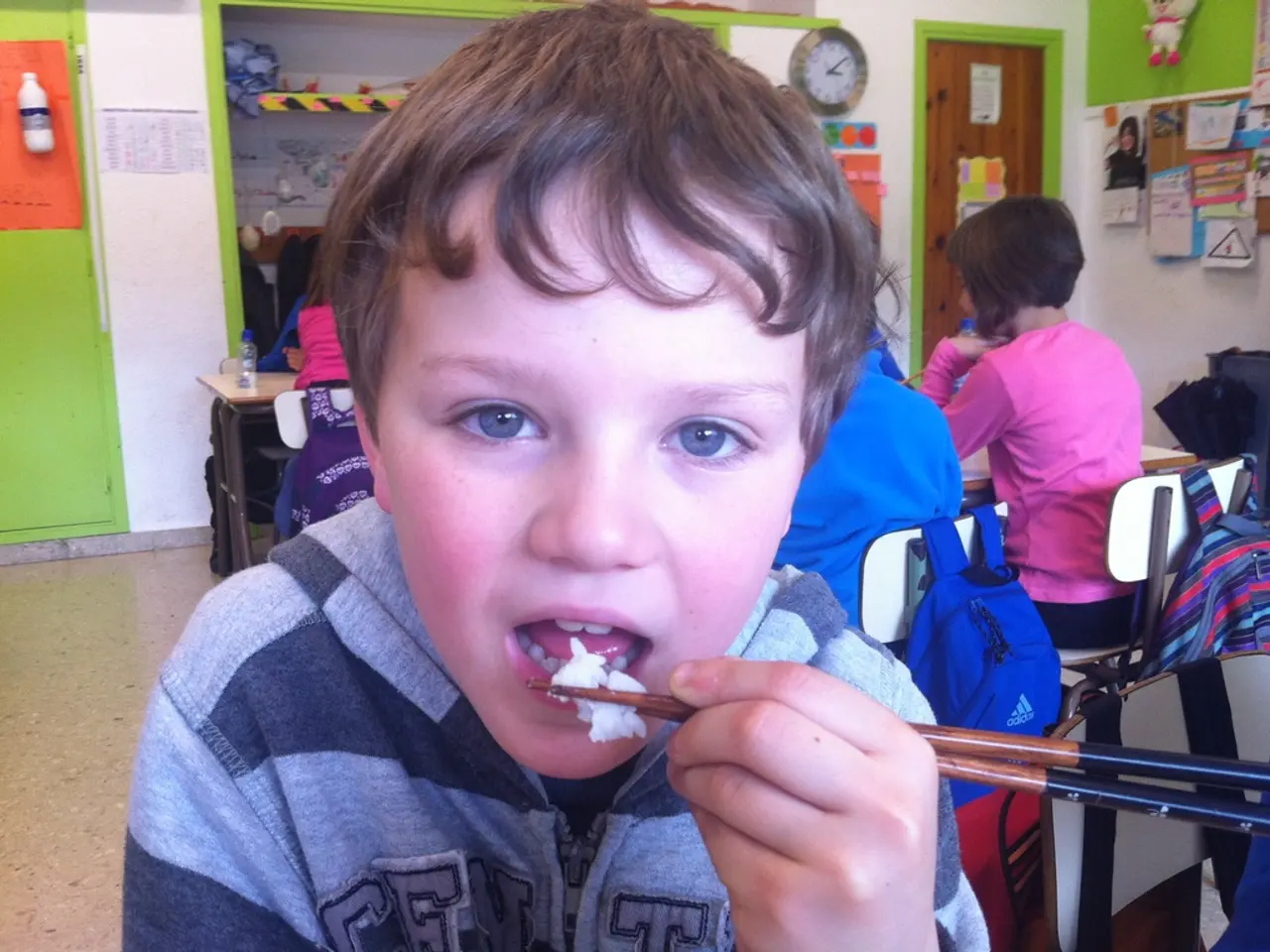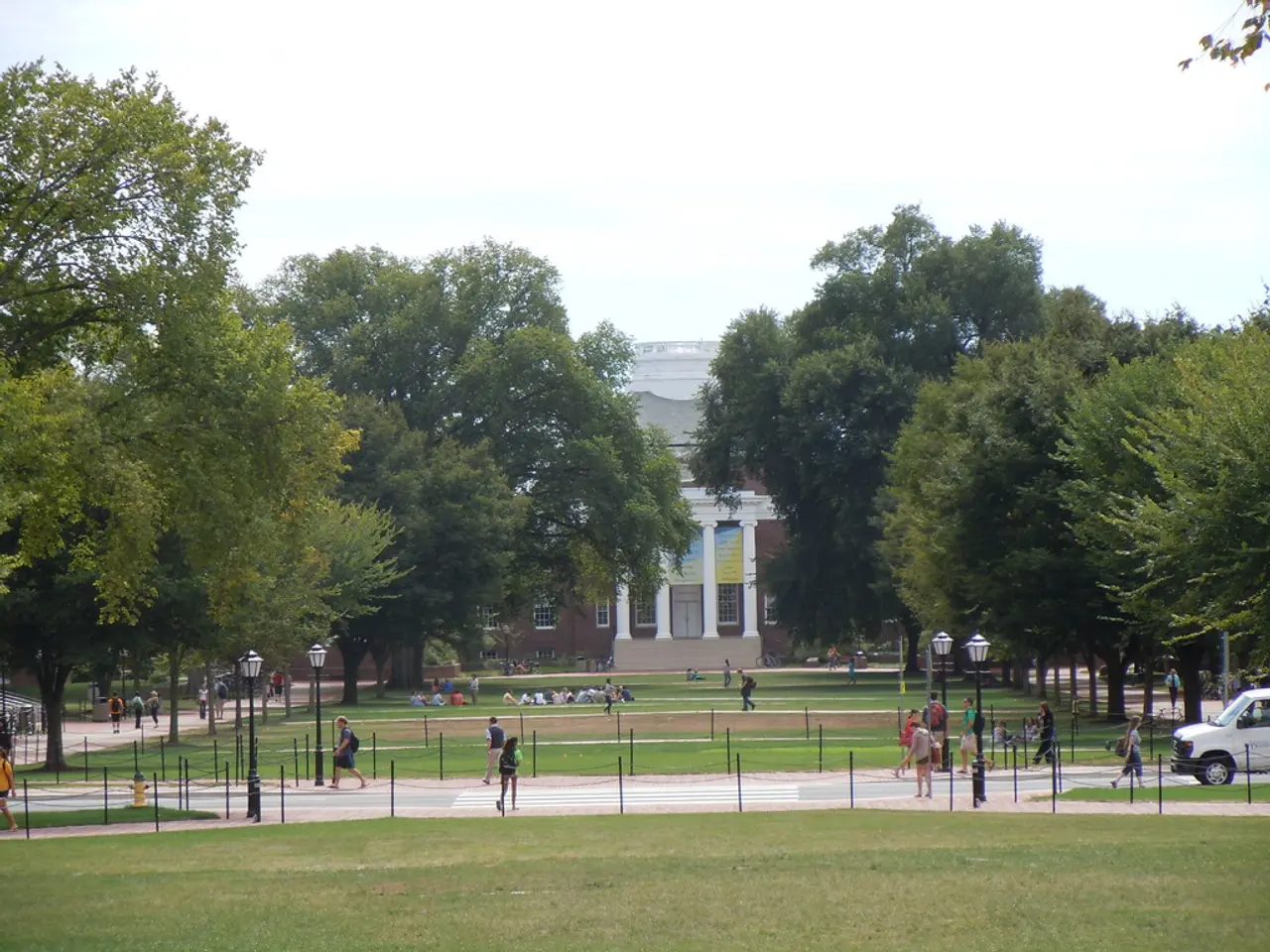Exciting Math Evaluations Drawing on Nature's Wonders to Spark Curiosity
Nature-Based Math Assessments Bring Math to Life
Nature is not just a backdrop for learning, but a rich resource for teaching math in engaging and meaningful ways. By incorporating natural elements into math assessments, students can connect abstract concepts to concrete experiences, boosting engagement and real-world understanding.
One such method is using flowers and petals as physical representations of fractions. For instance, daisies can demonstrate equal parts, with children plucking petals to show halves, thirds, and quarters. Similarly, students can count total petals and divide them into equal groups to represent fractions, such as 1/2 of 12 petals equals 6 or 1/3 of 15 petals equals 5.
Natural height comparisons can also develop visual estimation skills and proportional reasoning. Using fallen branches as measuring sticks, students can compare the height of trees, or even themselves, to build a sense of relative size and proportion.
Nature offers abundant opportunities for hands-on fraction exploration. For example, students can sort rocks by colour, size, or texture to demonstrate how fractions represent portions of complete sets. Rock collections can be used as powerful fraction manipulatives to help students grasp part-to-whole relationships.
In addition, students can create Fibonacci sequences using collected acorns, pebbles, or seed pods, demonstrating their understanding of how each number builds upon the previous two. This demonstration of mathematical precision in nature can be a powerful learning experience.
Nature-based math assessments also provide opportunities for students to create their own problems. For example, students can create problems about bird migration patterns, seed germination rates, and rainfall collection based on their outdoor observations.
These assessments also challenge students to apply math in practical ways. For instance, using pinecones, students can practice skip counting and build number patterns, demonstrating their understanding of multiplication concepts. Structure-building assessments, such as calculating load distribution and balance requirements for stick bridges and towers, also encourage students to apply math in creative and practical ways.
Moreover, nature-based math assessments foster genuine curiosity about the world around us. Footstep measurement can transform abstract distance concepts into concrete experiences, helping students understand relative measurement. Branch intersections can serve as natural protractors for measuring angles, allowing students to develop spatial reasoning skills.
In essence, nature-based math assessments transform abstract mathematical ideas into concrete, relevant experiences that engage students physically, cognitively, and emotionally, encouraging deeper understanding and appreciation of math in everyday life. Research suggests that integrating outdoor learning environments and real-world problem contexts improves engagement, conceptual understanding, and motivation in math.
[1] Freeman, S., Eddy, S. L., McDonough, M., Smith, M. K., Okoroafor, N., Jordt, H., & Wenderoth, M. P. (2014). Active learning increases student performance in science, engineering, and mathematics. Proceedings of the National Academy of Sciences, 111(23), 8410-8413.
[2] National Research Council. (2012). A framework for K-12 science education: Practices, crosscutting concepts, and core ideas. Washington, DC: The National Academies Press.
[3] Louv, R. (2008). Last child in the woods: Saving our children from nature-deficit disorder. Algonquin Books.
[4] Tanner, S. J., & Boyle, M. (2018). Outdoor learning: A review of evidence on the impact of outdoor learning on children's cognitive, social and emotional development. Journal of Educational Psychology, 110(8), 1054-1079.
While nature-based math assessments bring math concepts to life, they also serve as valuable resources for education-and-self-development. For example, studying the Fibonacci sequence in pinecones or using flower petals to represent fractions can enhance science literacy and spatial reasoning.
Moreover, these assessments encourage lifestyle changes that promote harmonious coexistence with nature, such as understanding the ecological balance through bird migration patterns or rainfall collection, thereby fostering an appreciation for nature and promoting an eco-conscious lifestyle.




